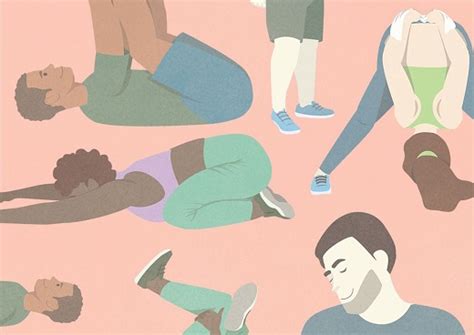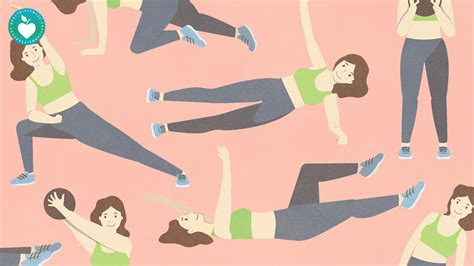Yoga is a powerful practice that promotes both relaxation and flexibility, making it an essential part of a balanced lifestyle. Whether you’re looking to unwind after a long day or improve your range of motion, yoga offers a variety of poses to suit your needs. This guide explores the benefits of yoga for relaxation and flexibility, along with step-by-step poses suitable for beginners, intermediates, and advanced practitioners. By incorporating these poses into your daily routine, you’ll not only enhance physical flexibility but also cultivate a deeper sense of mental calm and well-being. Discover how yoga can transform your life, one pose at a time.
tirfblog.com will explore this topic comprehensively.
1. Benefits of Yoga for Relaxation and Flexibility
Yoga provides numerous benefits for both relaxation and flexibility, making it an ideal practice for people of all fitness levels. One of its key advantages is stress reduction. Through controlled breathing techniques and mindful movements, yoga helps calm the nervous system, promoting a state of deep relaxation. This can relieve tension, reduce anxiety, and improve sleep quality.
Flexibility is another major benefit of yoga. Regular practice stretches muscles and improves joint mobility, leading to increased flexibility over time. This is particularly beneficial for reducing the risk of injury, improving posture, and easing discomfort from stiffness or tightness in the body. As flexibility improves, everyday movements become smoother and more efficient.
Additionally, yoga supports overall body awareness, which helps you move with greater control and balance. As you practice, you learn to tune into your body’s needs, easing tension in overworked areas while strengthening weaker muscles. This balanced approach not only increases physical flexibility but also fosters mental flexibility, allowing you to better handle daily stressors.
Incorporating yoga into your routine can lead to long-term health benefits, including enhanced muscle tone, improved circulation, and a deeper connection between the mind and body. Whether your goal is to relax or become more flexible, yoga offers a holistic approach to wellness that can positively impact both your physical and mental well-being.

2. Essential Yoga Poses for Beginners
For beginners, yoga offers a variety of simple poses that focus on both relaxation and building foundational flexibility. These poses are accessible and can be done by anyone, regardless of fitness level.
One of the most fundamental poses is Child’s Pose (Balasana). This resting pose gently stretches the back, hips, and thighs while promoting relaxation. It’s a perfect pose to return to anytime you need a moment of calm during your practice.
Mountain Pose (Tadasana) is another essential pose. Though it appears simple, it’s vital for developing proper posture and body awareness. It strengthens your legs, improves balance, and aligns the spine, setting the tone for more advanced poses.
Cat-Cow Pose (Marjaryasana-Bitilasana) is a gentle flow between two positions that stretches the spine and improves mobility. It’s excellent for relieving tension in the back and warming up the body.
Downward-Facing Dog (Adho Mukha Svanasana) is a pose that stretches the hamstrings, calves, and shoulders while building strength in the arms and legs. It also helps to calm the mind and relieve stress.
By regularly practicing these poses, beginners can establish a solid foundation in yoga, gradually improving both flexibility and relaxation. With consistency, these simple postures pave the way for deeper stretches and more advanced movements.

3. Intermediate Poses to Enhance Flexibility
Once you’ve mastered the basics, transitioning to intermediate yoga poses can further enhance your flexibility and deepen your practice. These poses challenge the body in new ways, helping to build strength while increasing your range of motion.
Warrior II (Virabhadrasana II) is a powerful pose that strengthens the legs, opens the hips, and stretches the inner thighs. It also improves balance and endurance, making it a great pose for enhancing lower body flexibility.
Triangle Pose (Trikonasana) is another intermediate pose that provides a deep stretch to the hamstrings, calves, and hips while promoting length through the spine. It also opens the chest and shoulders, improving flexibility in the upper body.
Pigeon Pose (Eka Pada Rajakapotasana) focuses on the hips, which are often tight from sitting or lack of movement. This deep hip opener improves flexibility in the hip flexors and glutes, while also releasing tension stored in the lower back.
Camel Pose (Ustrasana) stretches the front of the body, including the chest, abdomen, and quadriceps, while also lengthening the spine. This pose can help increase flexibility in the back and open the heart area for deeper breathing.
Regular practice of these intermediate poses will continue to enhance both flexibility and overall body strength, supporting a more advanced and mindful yoga practice.

4. Advanced Poses for Deep Relaxation and Flexibility
For those who are ready to take their practice to the next level, advanced yoga poses offer deep relaxation and increased flexibility. These challenging postures require focus, strength, and control but provide profound benefits for both the body and mind.
King Pigeon Pose (Kapotasana) is a deeper variation of the traditional Pigeon Pose, requiring extreme flexibility in the hips, spine, and shoulders. This pose opens the chest and stretches the entire front body while encouraging deep relaxation through controlled breathing.
Full Wheel Pose (Urdhva Dhanurasana) is a powerful backbend that stretches the spine, chest, and shoulders while strengthening the arms and legs. It improves flexibility in the spine and energizes the body, promoting an open heart and mind.
Lotus Pose (Padmasana), a seated posture, is excellent for deep relaxation and meditation. Though it requires advanced hip flexibility, this pose allows for a profound sense of calm, encouraging mental clarity and stillness.
Forearm Stand (Pincha Mayurasana) challenges balance, core strength, and shoulder flexibility. This inversion not only increases flexibility but also promotes focus and mental discipline.
Incorporating these advanced poses into your practice can lead to greater flexibility, enhanced relaxation, and a deeper connection to your breath and body.
5. Tips for Incorporating Yoga into Your Daily Routine
Incorporating yoga into your daily routine can greatly enhance your overall well-being. Here are some practical tips to make yoga a consistent part of your life:
1. Start Small: Begin with short, manageable sessions. Even 10-15 minutes a day can make a significant difference. As you become more comfortable, gradually increase the duration of your practice.
2. Create a Routine: Set aside a specific time each day for your yoga practice. Whether it’s in the morning to energize your day or in the evening to unwind, having a consistent schedule helps make yoga a habit.
3. Designate a Space: Choose a quiet, comfortable spot in your home where you can practice without distractions. Having a dedicated space can help you stay focused and committed.
4. Use Online Resources: There are numerous online classes and apps available for all skill levels. These resources can provide guidance and variety, helping you stay motivated and explore new poses.
5. Listen to Your Body: Pay attention to how your body feels and adjust your practice accordingly. It’s important to practice yoga in a way that respects your body’s limits and promotes overall health.
6. Set Goals: Establish personal goals for your yoga practice, such as mastering a new pose or improving flexibility. Setting goals can provide motivation and a sense of accomplishment.
By integrating these tips into your daily routine, you can build a sustainable yoga practice that supports relaxation, flexibility, and overall wellness.
Yoga is a transformative practice that enhances relaxation and flexibility, contributing to overall well-being. By starting with essential poses for beginners and gradually progressing to intermediate and advanced poses, you can build a strong foundation and deepen your practice. Incorporating yoga into your daily routine with consistency and mindfulness will not only improve physical flexibility but also foster mental clarity and relaxation. Embrace the journey of yoga with patience and dedication, and enjoy the profound benefits it brings to both body and mind. Your path to greater flexibility and inner peace begins with each mindful breath and movement.
tirfblog.com

